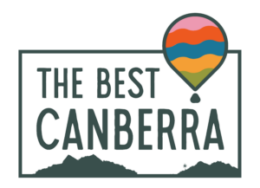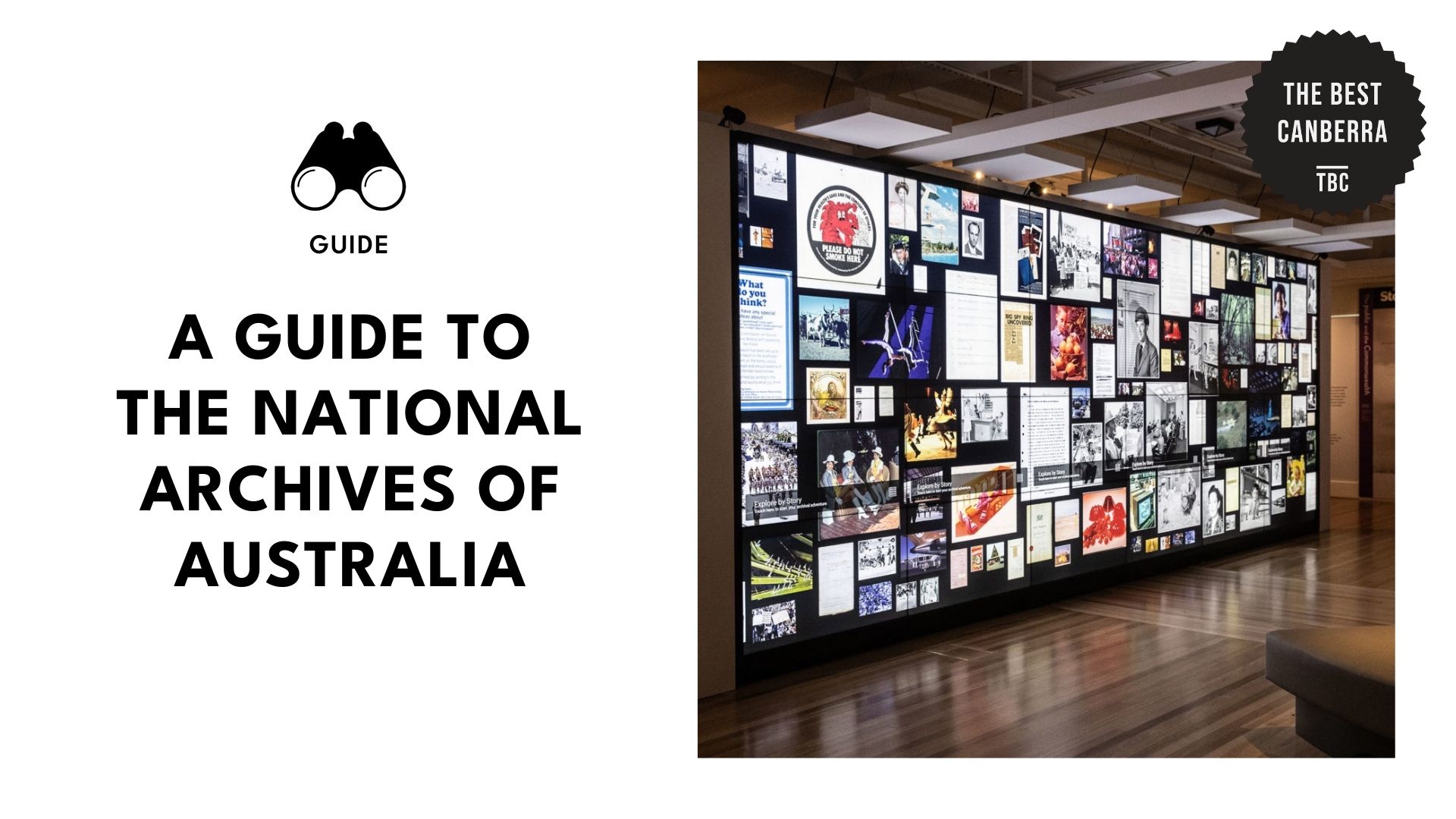A visitor’s guide to the National Archives of Australia
Behind Australia’s present prosperity lies a story of resilience told from diverse voices. At the National Archives of Australia, you will find these stories carefully preserved through exhibits, tours, and lectures.
Every document, object, and photograph is a milestone that has shaped the country into what it is today.
So, if you find yourself in this place, take the time to explore and wander. If you don’t know where to start, we’re here to walk you through some of the notable displays and activities that will make your visit worthwhile!
The exhibits
Voices/Dhunial
– Media credit: naagovau
The Voices/Dhunial exhibition offers a deep dive into the birth of Australia’s democracy. Dhunial, meaning talk in the Ngunnawal language, pays tribute to past events that shaped the nation’s constitution, citizenship, and political rights.
Here, you’ll find the original founding documents on display, like the Australian Constitution and other rare artifacts.
Visitors can engage with interactive displays and multimedia presentations that show Australia’s transition to a unified nation.
It’s a must-see for anyone interested in understanding the foundation of the country’s civil life.
Pro tip:
For this exhibition, commit to at least an hour to see the displays. If you want to thoroughly learn the history, rushing through the exhibit would miss a lot of the layered stories.
Connections/Mura Gadi
– Media credit: naagovau
Being a powerful counterpoint to Voices, the Connections/Mura Gadi exhibition focuses on personal stories of how Australians have interacted with their government in the past.
“Mura gadi”, meaning “long ago”, exhibits the records of migration, protests, participation, and the relationship between the people and the bureaucracy.
Some of the displays are a handwritten petition from the 1800s, a war bride’s migration documents, and protest banners. You’ll also find documents from Indigenous Australians during their petition for rights.
What’s great about this is that artifacts from the collection are rotated regularly. That means if you visit again the next day, you’ll be greeted with a different set of displays.
Pro tip:
The exhibition has an interactive kiosk that can help you trace records directly on-site. You can take advantage of this if you have a family history connection to immigration!
Camel Trains to Steel Wheels
– Media credit: statelibrarysa
The Trans-Australian Railway was Australia’s most important line as it traversed around Western Australia and the eastern states, significantly shortening travel and communication time.
This exhibit displays the records and photos of the events during the railway’s early development, specifically its first 60 years.
It tells the story of Australia’s transportation evolution from camel caravans used by the Afghans to the construction of the railways.
Pro tip:
If you’re a fan of engineering history, we suggest spending time at the ‘Steel Wheels’ section, as you’ll find explanations about how railway gauges affected Australia’s transport system. It’s a bit nerdy, but many find it interesting!
The tours
Guided tours
– Media credit: nationalhistorychallenge
If you’re a first-time visitor, you can ask the staff to guide you through the exhibitions and walk you through the details and insights you’ll probably miss in self-guided visits.
These guided tours are free and last about 45 minutes to an hour.
Joining a tour also opens up the chance to ask questions, and in fact, visitors find the guides incredibly knowledgeable and helpful.
Pro tip:
If you’re planning to get the guided tour, it’s best to check the daily schedule online before your visit. Sometimes, these tours can fill up quickly during the weekends and school holidays.
Skirt-suits and Suffragettes
– Media credit: naagovau
Now, if you’re interested in an outdoor tour, you can join the Skirt-suits and Suffragettes Tour.
This walking tour starts at the National Archives and then goes through Canberra’s National Triangle, as it dives into the contribution of women to Australian democracy.
It aims to give a spotlight to the figures who fought for the women’s right to vote, hold office, and initiate policies.
This is a great experience for historians, students, and people who are generally interested in gender equality movements.
Visitors appreciate that the tour has physical landmarks that point out where the protests took place or which building held an important government decision.
Pro tip:
The walking tour covers a bit of a distance. We suggest wearing comfortable shoes and bringing a hat or umbrella.
Objects of Interest
– Media credit: naagovau
The Objects of Interest Tour will take you to the display of quirky, unexpected, and controversial artifacts alongside important constitutional documents.
You’ll find things like old passports with secret markings, early advertisement posters, and protest memorabilia.
We honestly find this fascinating, as this reminds us that history is not just about uprisings and agreements, but also about what the everyday lives of the citizens looked like.
And by the way, the displays here are occasionally rotated too, so each visit is greeted with something different.
Pro tip:
If you want to avoid the bigger crowd, we suggest visiting on weekday mornings – preferably Tuesday to Thursday, so you can enjoy an uninterrupted tour.
National Archives to the High Court
– Media credit: luanatorreslaw
Here’s another guided outdoor walking tour that leads from the Archive building to the nearby High Court.
Here, you’ll get to explore Australia’s legal evolution, the meaning of the Constitution, and how the High Court interprets it. Some highlights are the Federation Mall, Old Parliament House, and various sculptures.
The tour also includes a visit to the courtrooms!
This free, 60-90-minute tour is great for visitors who want to combine sightseeing and educational content. Plus, Canberra’s boulevards and stunning gardens make it a pleasant walk, though it can get very windy at times.
Pro tip:
Make sure to wear comfortable shoes and clothes. The tour will proceed even in wet weather!
Other activities and amenities
Curator talks
– Media credit: photoxben
The National Archives hosts curator talks and special lectures several times a year. These talks feature special exhibitions, new assets, and the latest research methods.
Each session usually focuses on a particular theme. Past topics include the Australian immigration policy, the role of women in wartime administration, and the conservation of delicate historical documents.
Visitors are usually academics, students, and retirees – and we’ve heard them mention that they found it encouraging to see how accessible the talks are, and it’s usually free!
Pro tip:
While the talks are typically free, seats are limited, so pre-registration is often required. Check the Archives’ events page and book your seat as soon as the dates are announced.
The Cafe Constitution
– Media credit: tree_eightythree
After your tour or visit, you can take a break and grab a bite or have a cup of coffee at Cafe Constitution – the National Archives’ in-house cafe.
Open for breakfast and lunch, the café serves delicious meals made from the local produce. Honestly, it’s a much-needed stop for a day full of exploring.
The cafe’s coffees are well-loved, and we personally recommend trying their pie offerings! It’s the perfect pair for a quick afternoon snack.
And here’s the best part – the seating area overlooks a garden courtyard, giving your meal a nice view to enjoy.
Pro tip:
Plan your visit outside of peak lunch hours (around 12:00 pm–1:30 pm) for faster service and your choice of the best seat!
National Archives of Australia as an event space
Here’s the thing, the National Archives isn’t just for exhibits and tours; it’s also a venue for corporate events like workshops, lectures, product launches, and more.
The venue can accommodate up to 120 people and can be arranged into different styles, such as lecture, boardroom, and cocktail.
Plus, you can use the gallery space for temporary exhibits, so your guests have something to explore before or after your event. You can also contact the organizers if you want to arrange a special guided tour!
The venue is equipped with an audiovisual system, a lectern, a stage, and free public Wi-Fi.
With all these offerings, it’s surely a great deal!


